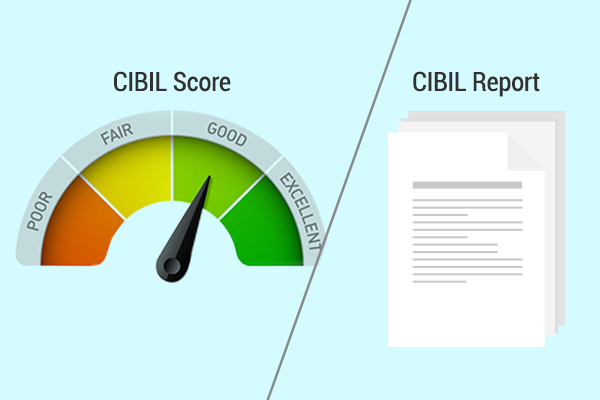
Cibil Report
A CIBIL (Credit Information Bureau India Limited) or credit report is a comprehensive document that provides detailed insights into your credit history and financial behavior and It’s crucial to understand how to read and interpret this report to manage your credit effectively. So Here’s a step-by-step guide to help you navigate your credit report:
Know More About Cibil Report
1.OBTAIN YOUR CIBIL REPORT
Before you can read your credit report, you need to obtain a copy. In India, also you can get your CIBIL report from the official CIBIL website or other authorized credit bureaus like Experian, Equifax, and CRIF High Mark. You are entitled to one free credit report per year from each bureau.
2. REVIEW THE PERSONAL INFORMATION
Personal Details: Your report will start with personal information such as your name, date of birth, address, and contact details. Ensure that this information is accurate and up-to-date. Additionally, errors in personal details can sometimes lead to issues with your credit report.
3. CHECK YOUR CREDIT REPORT ACCOUNTS
Credit Accounts Section: This section lists all your credit accounts, including credit cards, loans, and mortgages. So for each account, you’ll see:
Account Type: The type of account (e.g., credit card, personal loan, mortgage).
Account Number: A unique identifier for each account.
Account Status: Whether the account is open, closed, or inactive.
Credit Limit or Loan Amount: The maximum credit limit on credit cards or the original loan amount.
Balance: The current balance owed.
Payment History: A record of your payments, showing whether they were made on time or if there were any late payments.
4. EXAMINE YOUR PAYMENT HISTORY
Payment Record: This section shows your payment behaviour over time. Look for:
On-Time Payments: Timely payments are marked as ‘Paid’ or ‘Current.’
Late Payments: Payments made after the due date, which may be flagged with different severity levels (e.g., 30 days late, 60 days late).
Defaults or Settlements: If you have any accounts marked as defaulted or settled, this can negatively impact your credit score.
5. REVIEW YOUR CREDIT UTILIZATION
Credit Utilization Ratio: This is the ratio of your current credit card balances to your credit limits. Moreover a high credit utilization ratio can indicate that you are over-relying on credit, which can negatively affect your score. Aim to keep this ratio below 30%.
6. CHECK FOR INQUIRIES
Credit Inquiries Section: This shows all recent credit inquiries, which can be categorized into:
Hard Inquiries: These are made when you apply for new credit or loans. Henceforth multiple hard inquiries in a short period can impact your credit score.
Soft Inquiries: These are usually made for pre-approved offers or by you checking your own credit. At last they do not affect your score.
7. UNDERSTAND YOUR CREDIT SCORE
Credit Score: Firstly at the end of your report, you’ll find your credit score, which typically ranges from 300 to 850. At the end the score is a summary of your creditworthiness based on the information in your report. Always a higher score indicates better credit health.
Excellent (750-850): Excellent creditworthiness. Moreover, You’re likely to get the best terms on credit.
Good (700-749): Good credit health. Finally, you can expect favorable credit terms.
Fair (650-699): Average credit. At last, you may face higher interest rates or less favourable terms.
Poor (600-649): Below average credit. Likewise, you may struggle to get credit or face high interest rates.
Very Poor (Below 600): Poor creditworthiness. Consequently, you might have difficulty securing credit or face very high interest rates.
8. LOOK FOR ERRORS OR DISCREPANCIES
Error Check: Carefully review your credit report for any inaccuracies or discrepancies, such as incorrect account details, fraudulent accounts, or errors in payment history. Dispute any errors with the credit bureau to ensure your report accurately reflects your credit behaviour.
9. UNDERSTAND YOUR CREDIT HISTORY SUMMARY
Summary Section: This may include an overview of your credit accounts, any negative remarks, and the length of your credit history. It provides a snapshot of your overall credit behaviour and history.
10. TAKE ACTION BASED ON YOUR FINDINGS
Improvement Strategies: Based on what you find, take steps to improve your credit health if necessary:
Pay down existing debt: Focus on reducing outstanding balances.
Make payments on time: Set up reminders or automatic payments to ensure timely payments.
Review credit utilization: Reduce high credit card balances.
Avoid excessive new credit applications: Minimize hard inquiries by only applying for new credit when necessary.
CONCLUSION
Reading and understanding your CIBIL or credit report is essential for managing your financial health effectively. By familiarizing yourself with the various sections of your report and knowing how to interpret the information, you can take proactive steps to maintain a good credit score, address any issues, and make informed financial decisions. Regularly reviewing your credit report also helps you catch errors early and keep your credit in good shape.
